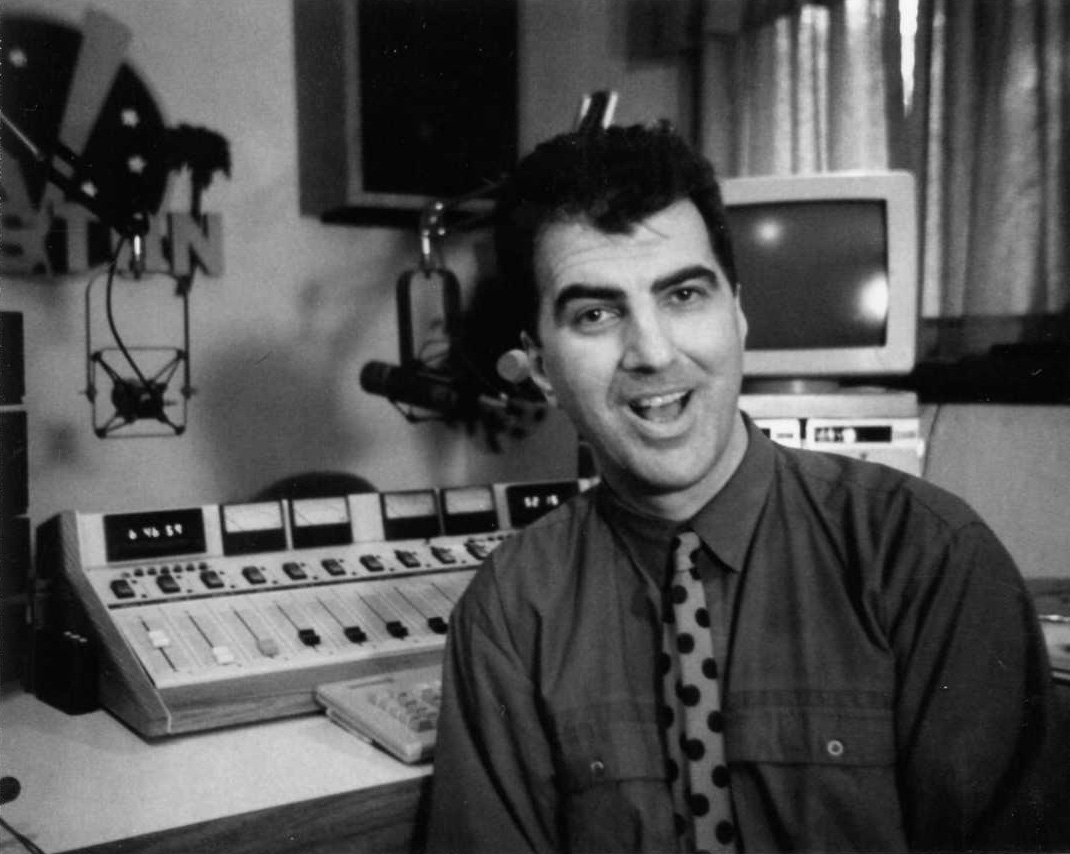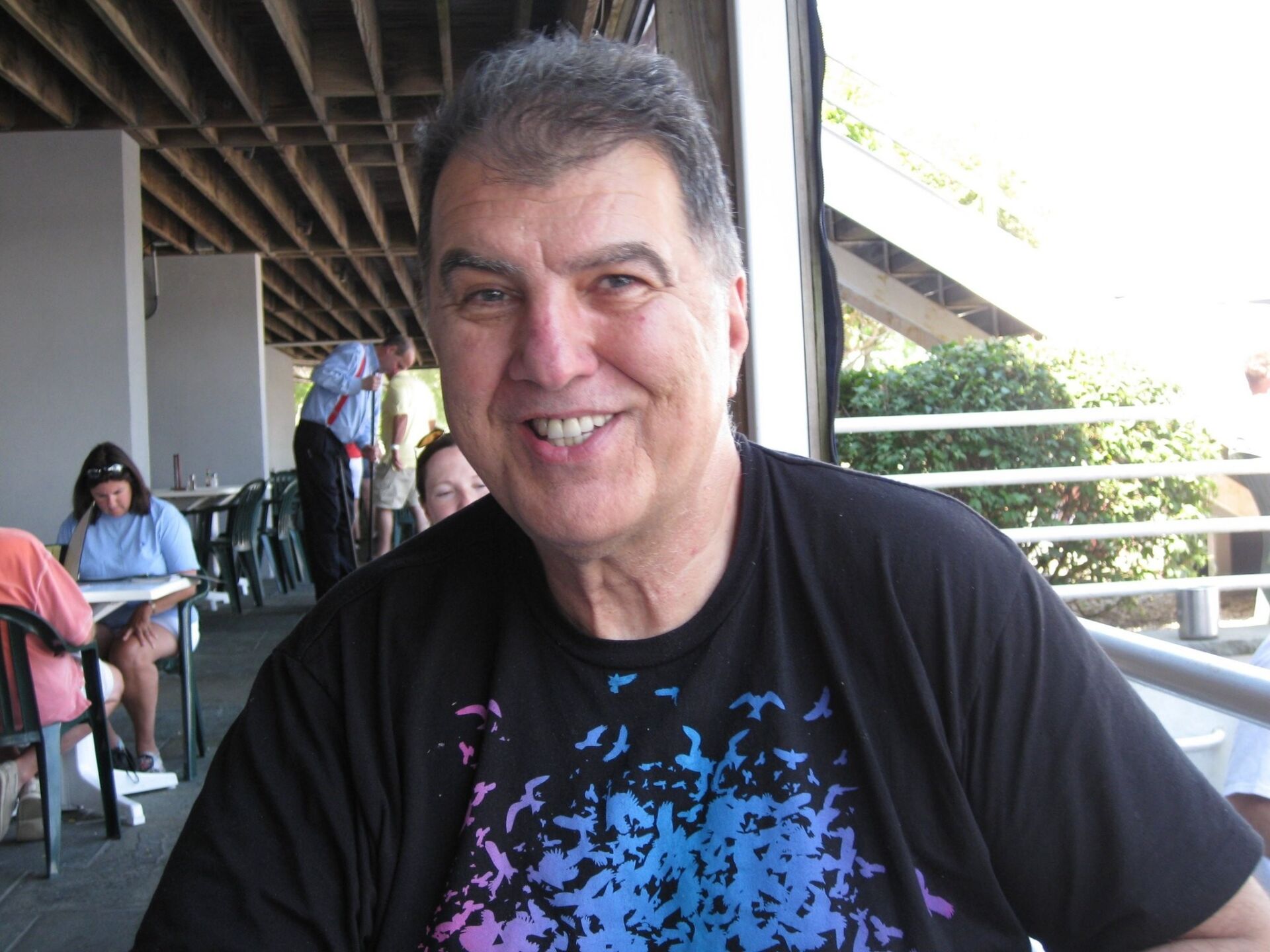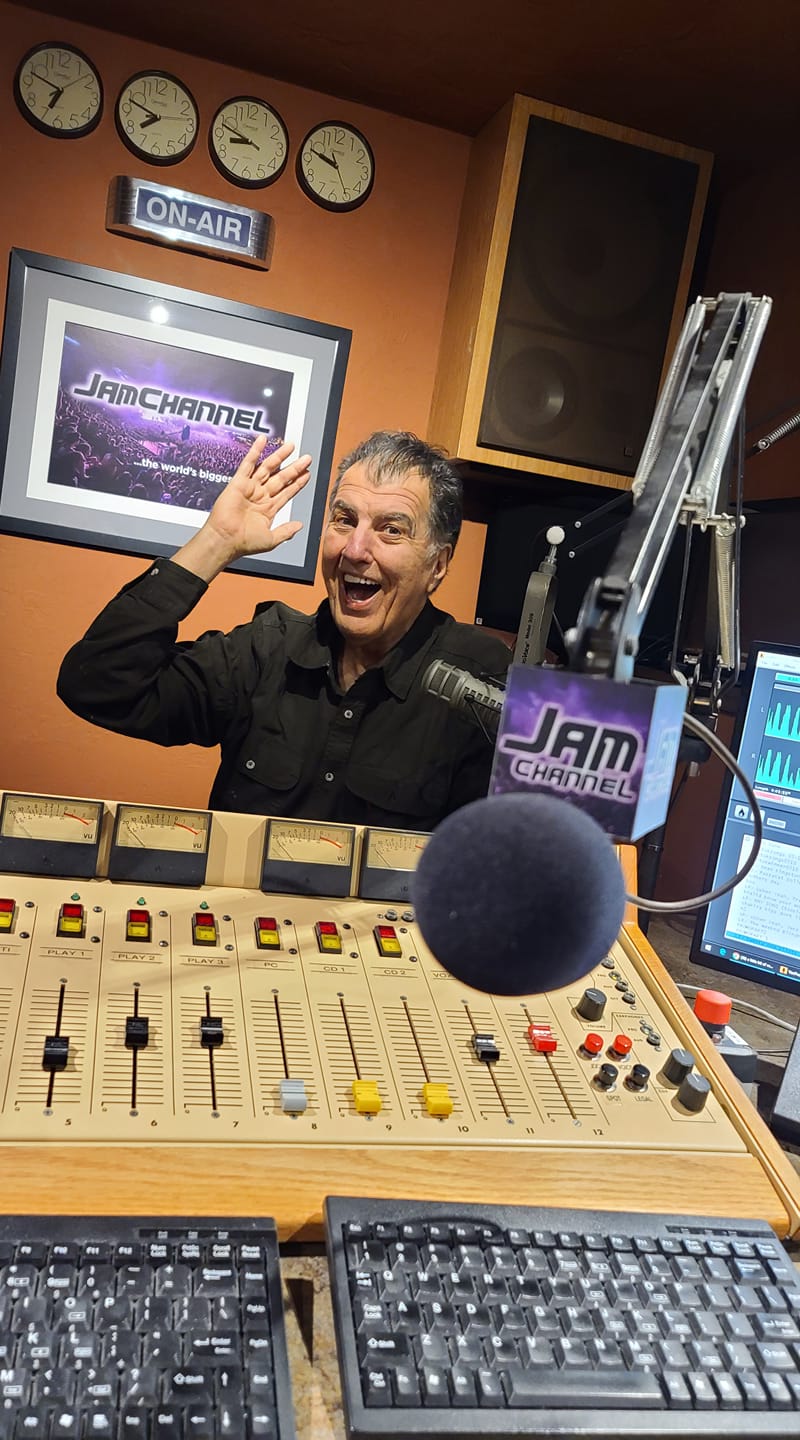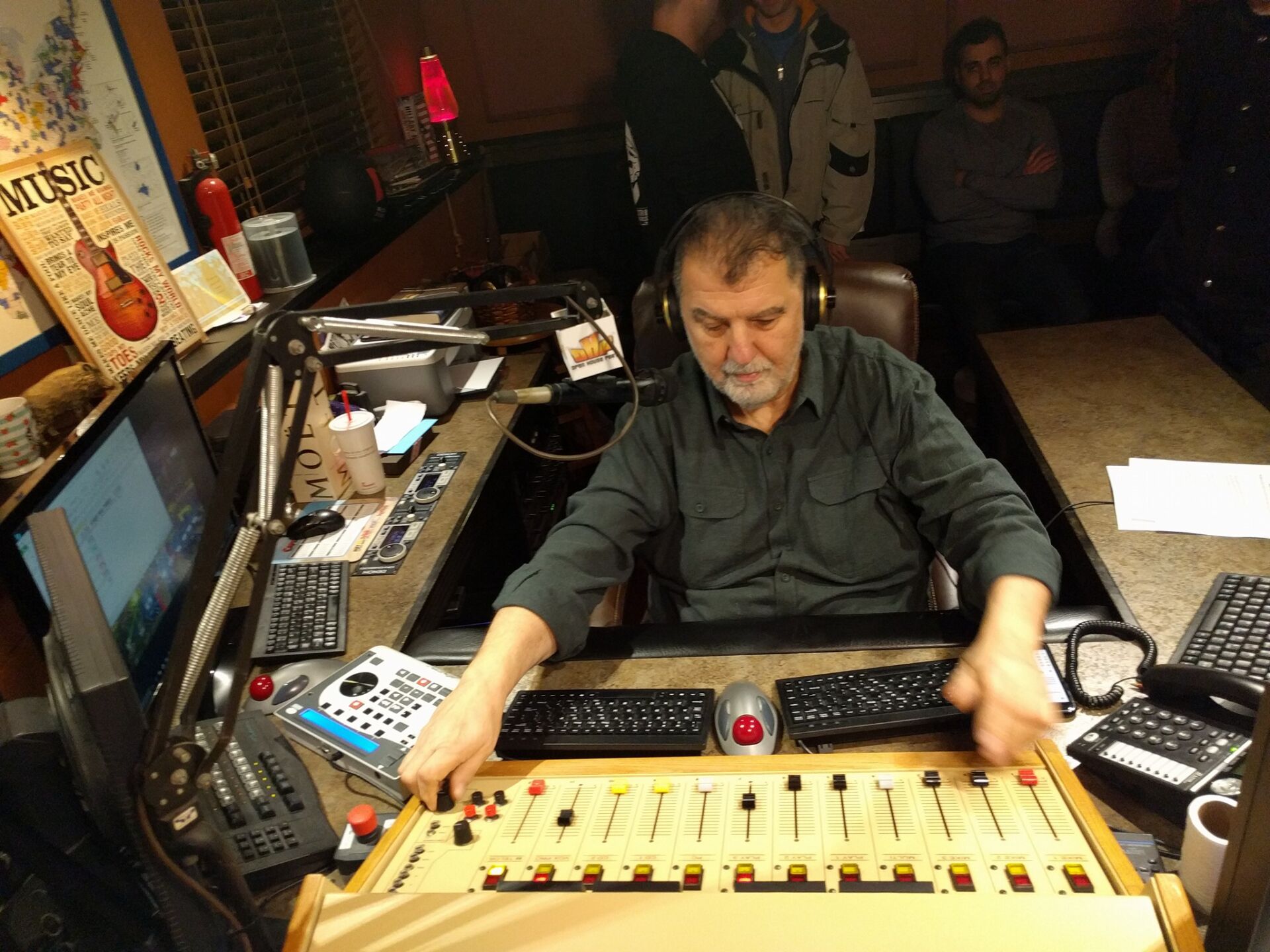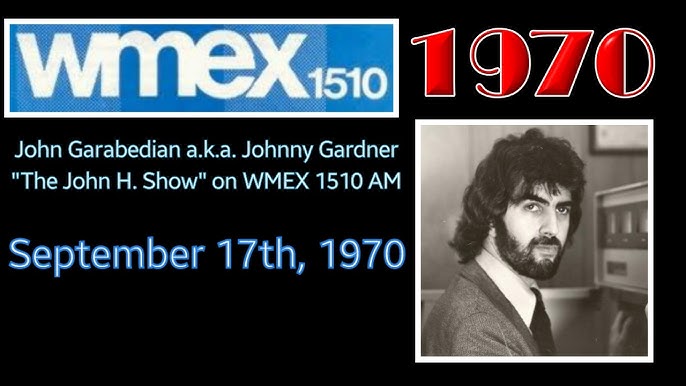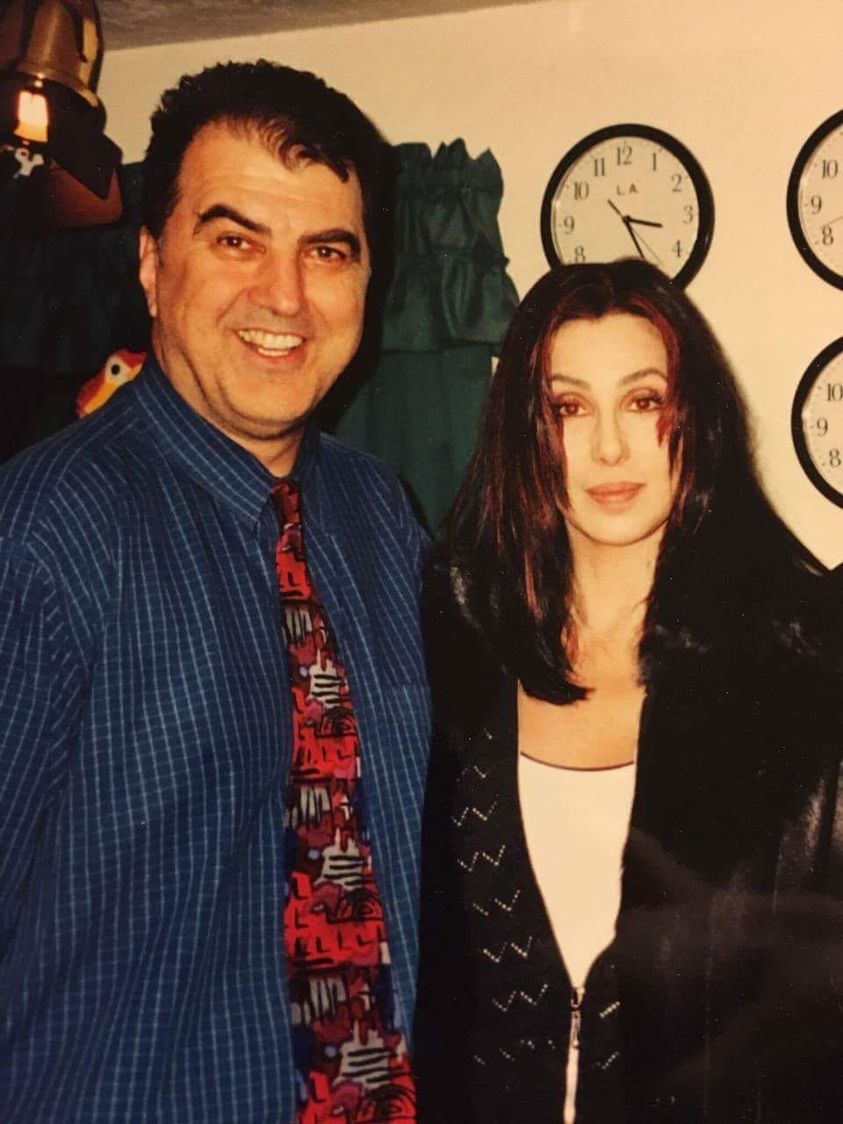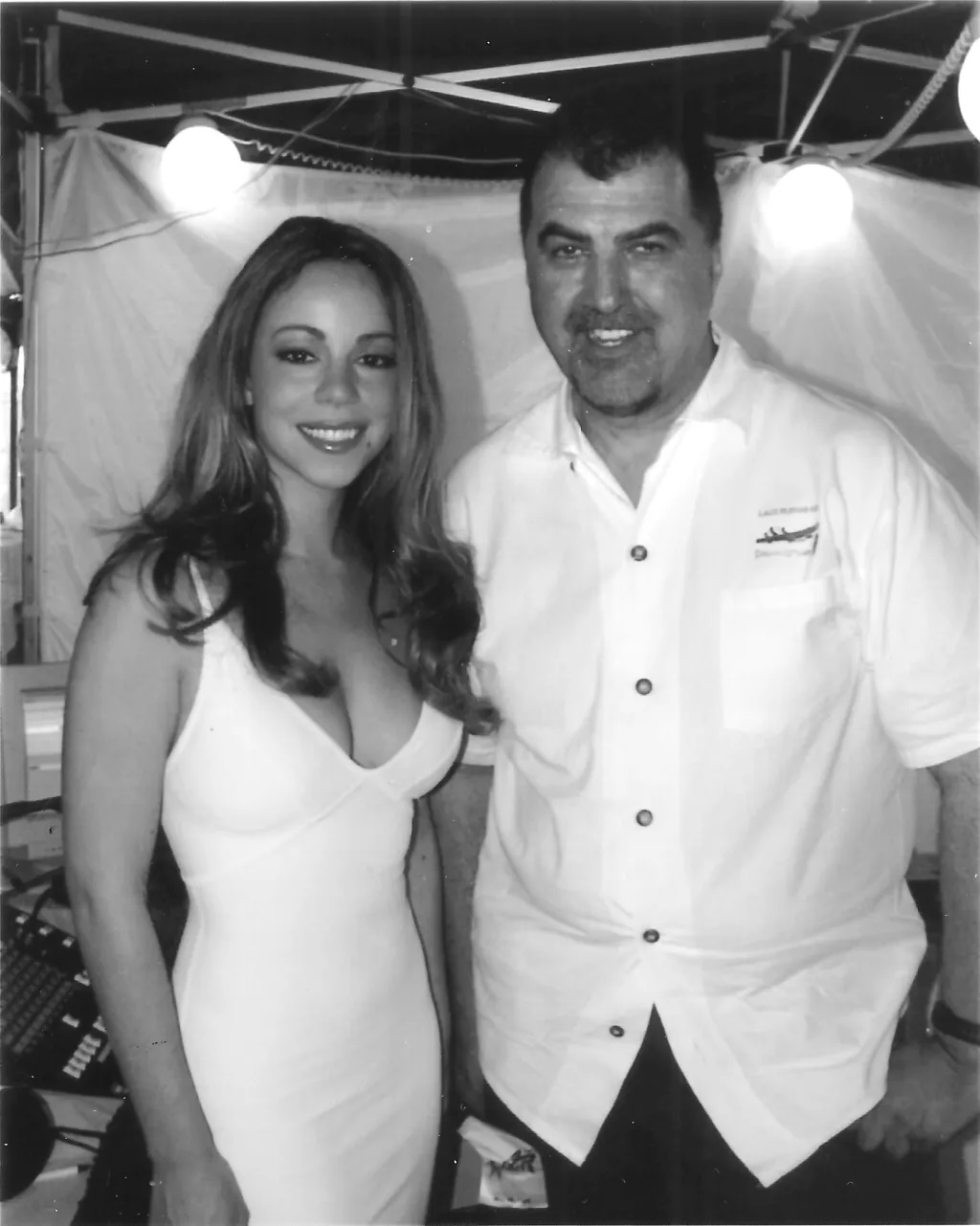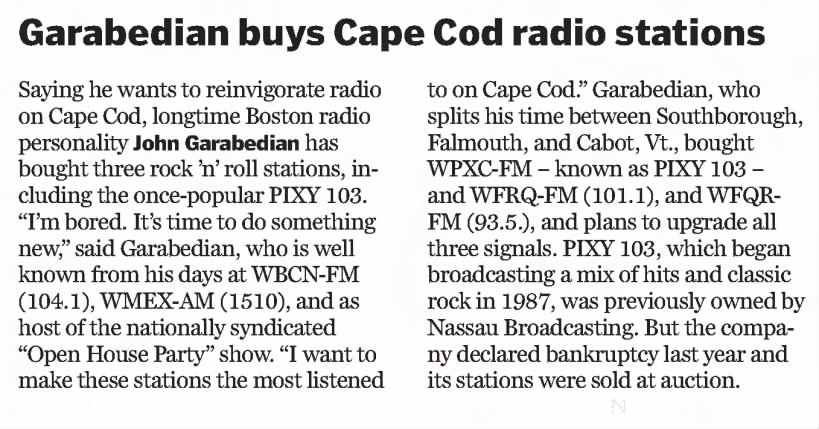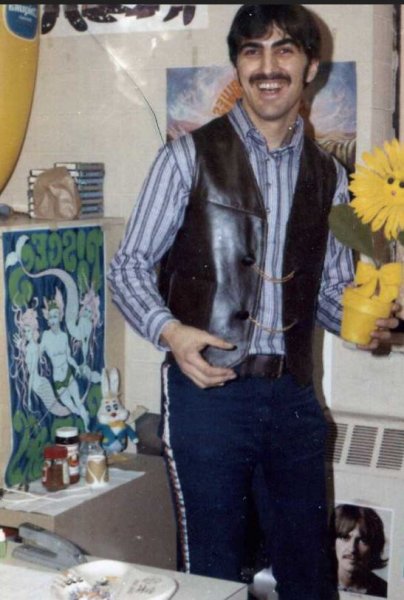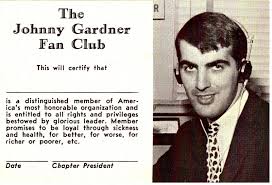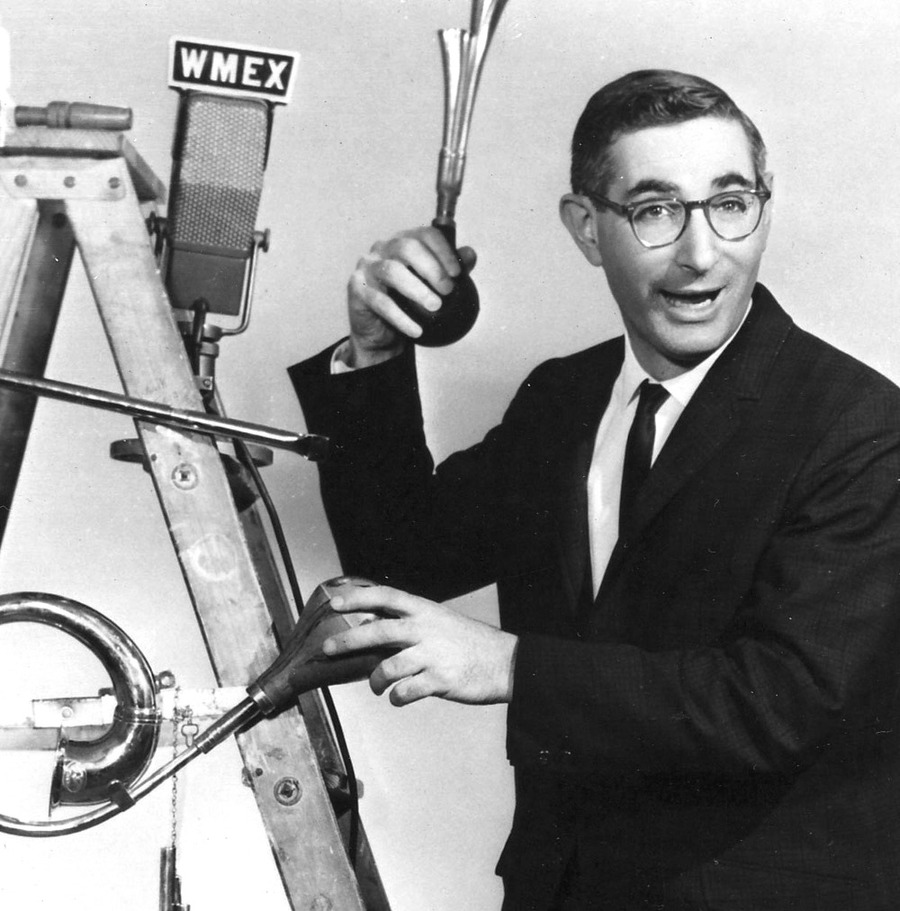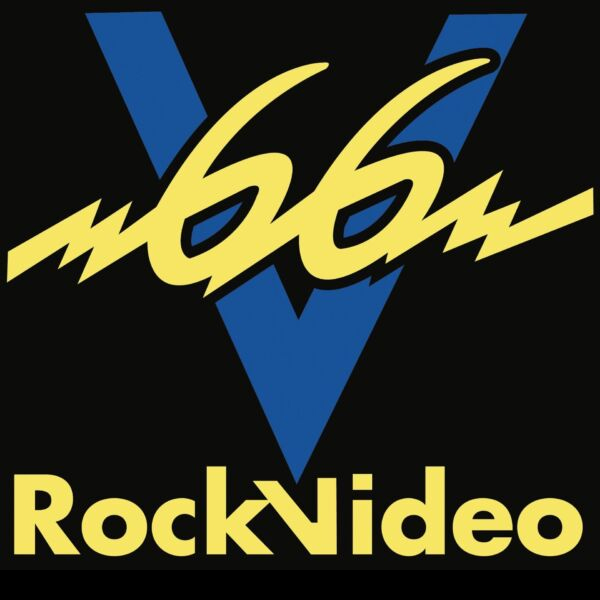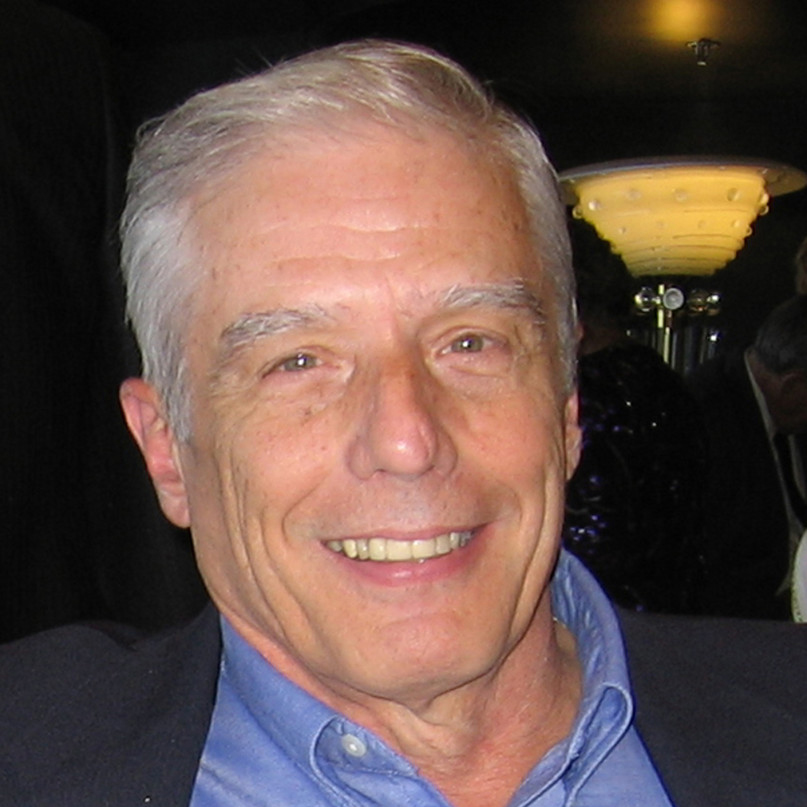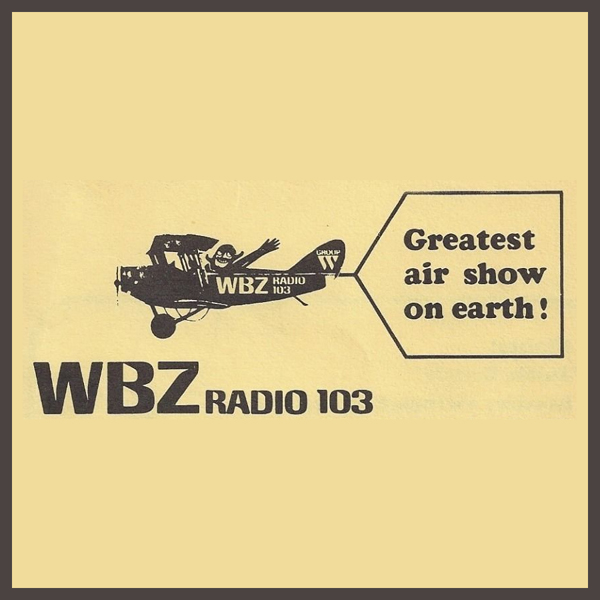John Garabedian
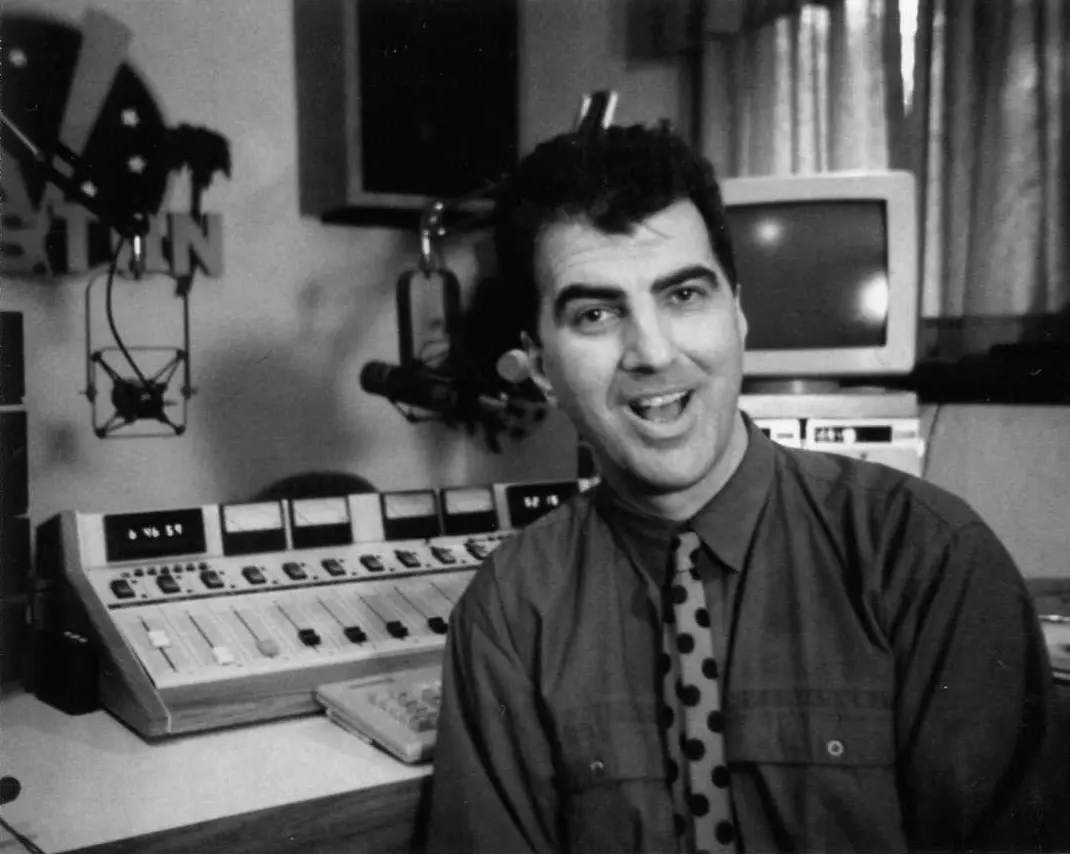
John H. Garabedian began his radio career while still in high school and for more than six decades has worked in both radio and television as a deejay, a program director, the host of a nationally syndicated radio show and a station owner. Throughout the years, he’s adapted to the sweeping shifts in broadcast media and carved out an enduring niche all his own.
Early years, WMRC, WORC, “Johnny Gardner”
Born in Cambridge, Massachusetts, on December 20, 1941, Garabedian was fascinated by radio as a child, he says, both the personalities on the air and the technology behind the broadcasts. In his autobiography, The Harmony of Parts (Orange Frazer Press, 2016), he writes about creating a basement lab when he was only nine years old in order to better understand how radios worked. He also knew from a very young age that he wanted to be a broadcaster. In fact, several years before graduating from Weston High School (class of 1959), he landed his first radio job at a small AM station, WMRC in Milford; after that, he worked part-time at Worcester’s WORC.
In the 1950s, deejays rarely had ethnic-sounding last names (WMEX’s Arnie “Woo Woo” Ginsburg was a rare exception), so John H. decided “Garabedian” wasn’t right for top-40 and used the on-air name “Johnny Gardner” at WORC. He eventually discarded that pseudonym, but one thing about the station turned out to have staying power: In the late 1950s, WORC had a much-loved request-and-dedication program called Open House Party and Garabedian used that name for his own syndicated radio show some years later.
After briefly attending the University of Miami (where he realized his heart was in being a broadcaster, rather than studying about it), he came back to Boston, hoping to pursue a full-time radio career. Fortunately, there was an opening at WORC doing production and some on-air work. He’d been happy at the station before and was pleased to be back but few top-40 deejays stayed in one place for very long and Garabedian was no exception. He was fired from WORC for spontaneously creating an event that involved some listeners drag racing in downtown Worcester; nobody was hurt, but the station’s general manager was not amused.
WSMN, WSAR, First return to WORC, WTSN, WPTR
His next job was in Nashua, New Hampshire, at WSMN. After that, he went to WSAR in Fall River but he missed the “personality radio” top-40 they aired at WORC. He’d kept in touch with the station and, as luck would have it, there was an opening for a nighttime deejay in the summer of 1961, WORC management agreeing to give Garabedian a second chance. By his own admission, though he was only 19 years old, he was more mature and determined to make the most of the fresh opportunity.
Garabedian spent just a few months working in Worcester before landing a job doing engineering at WESO in Southbridge, Massachusetts, one of the many times his first-class FCC engineering license came in handy. Next he was hired by WTSN in Dover, New Hampshire, to do afternoons; while working there, his newsman was Gary LaPierre, who soon became the morning news anchor at WBZ in Boston. His next stop wasn’t Boston, however; it was Albany, New York, where he worked for then-top 40 powerhouse WPTR. He had an excellent ear for picking hits (that, too, would come in handy), but the station’s strict format made it difficult to take chances on any new music. After several years, he began to consider his options.
Return to Boston, WMEX, WGTR, WDSL, WFEA
Growing up, Garabedian had listened to WMEX – as did countless other teens, particularly Arnie Ginsburg’s shows – and by 1964 he had heaps of experience and thought he was ready for the Boston market. As it turned out, there was an overnight opening at WMEX and in mid-1964 he was hired. He only lasted a few months before station owner Mac Richmond fired him but, as John H. says, his replacement was Larry Glick, and few people could deny that Glick was a legendary broadcaster.
By age 22, John H. had begun to think seriously about owning his own station and he decided to follow his dream. Despite being young and not wealthy, he found several business partners and received ongoing encouragement from his brother-in-law; in the autumn of 1964, he applied for a license to put a station on the air in Natick (about 18 miles west of Boston). Unfortunately, it would take years before what became WGTR went on the air, and he still needed a steady source of income.
He took a job as chief engineer at WDSL in Winston-Salem, North Carolina, for a few months, but he missed New England and returned in early 1965 as music director and midday deejay at WFEA in Manchester, New Hampshire. But while he was glad to be back on the air playing the hits, he was frustrated to learn that another company – one far better funded than his – had also applied for the frequency he was seeking.
Second return to WORC, WGTR planning
Wanting to work closer to Natick so he could continue his fight to win the license, he returned to WORC yet again, this time as an afternoon jock and operations manager. WORC had great ratings and John H. was among the most popular deejays there; he even co-hosted Open House Party and became the morning-drive announcer.
But his focus on securing FCC approval for his radio station (which finally happened in April 1967) was foremost on his mind; he had found a location, decided on the call letters (influenced by WPTR, he decided on WGTR) and with his partners, set to work getting it built. But it seemed there was one delay after another, including additional challenges from his competitors.
Return to WMEX, Losing “Johnny Gardner”
In early 1969, WORC was sold; when the new owners wanted to make changes Garabedian didn’t accept, he was fired. But this turned out to be a blessing in disguise since, after taking some time off, he. was able to find work in Boston again, back at WMEX. Things had changed in Boston radio and WRKO was now the dominant top-40 station. Dick Summer, formerly WBZ’s overnight star, had joined WMEX as a nighttime deejay and program director in May 1969 and was playing a lot of album cuts, but the station lacked mass appeal and ratings were low. However, Summer offered Garabedian some valuable advice: get rid of the “Johnny Gardner” persona and just be yourself. That’s when Garabedian began using his actual name on the air.
By spring 1970, he was doing weekday afternoon, and he had some leeway to make the music more hit-oriented, but changes were very gradual. When Dick Summer left WMEX in mid-1971, Garabedian convinced station owner Maxwell “Mac” Richmond to let him take over the programming and try to transform what was on the air, saying he was ready to compete head-to-head with WRKO. He put in request lines, hired a music director, created an identity for WMEX (“The New Music Authority”) and focused on finding new songs with hit potential. The music mix included album tracks that Garabedian thought might become popular as well as the most-requested songs and the biggest current hits.
On Garabedian’s watch, WMEX was credited with breaking such hit songs as “Nights in White Satin” by the Moody Blues, “Signs” by the Five Man Electrical Band, “Maggie May” by Rod Stewart and “I’d Love to Change the World” by Ten Years After, among many others. Soon, the station was getting better ratings and they were helping labels sell significantly more records in and around Boston.
Top-40 battle with WRKO
The battle between the upstart WMEX and the established leader WRKO was exciting for the listeners, and it earned Garabedian substantial acclaim. But, as with most things in top-40 radio, it didn’t last. Mac Richmond had a heart attack and died suddenly in October 1971 and his brother took over, bringing an entirely different vision for what WMEX ought to be, as well as a new general manager who wanted to dismantle everything Garabedian and the staff had accomplished. By Thanksgiving 1971, Garabedian was out of a job.
In January 1972, Timothy Crouse of Rolling Stone wrote a piece about the fierce WKRO-WMEX battle for top-40 dominance called “Boston Tests New Music & Flunks Out,” concluding that Garabedian made a strong push but not strong enough to topple WRKO. It also contained a rather prescient prediction from Garabedian: “…within ten years, AM radio will consist entirely of talk shows, supported by an adult or even geriatric audience.”
WGTR launch
Despite losing the top-40 war to ‘RKO and being dismissed from ‘MEX in the process, Garabedian landed on his feet; his radio station, WGTR, was finally ready to go on the air in the summer of 1972, from studios in an historic mansion in downtown Natick. In addition to hiring some well-respected local broadcasters, several of his family members (including his father, brother-in-law and sister) also pitched in. Garabedian planned to serve the community with coverage of news and local events as well as contests and giveaways, exactly like a major-market station.
He wanted the music programming to be based on the Billboard Top 40, but he wanted the station to take requests, too. Lacking the financial resources to hire a lot of deejays, he designed a voice-tracking system, where he and the other deejays could record lines or song introductions; the automation equipment would play them, making it sound as if there were professional announcers on the air at all times.
Within four years, WGTR had become an enormous success; despite a limited signal and daytime-only hours, the station was even beating a few of the larger stations in the ratings. Garabedian’s next project was (successfully) persuading the FCC to allow the station more power. He also needed to change WGTR’s format, too, as music was continuing to move over to FM and increasingly (as he had predicted), AM was broadcasting primarily news and/or sports. By 1980, WGTR had become an all-news station.
Flying lessons, WGTF, WBCN, V-66, Open House Party
By Garabedian’s own admission, he was always seeking a new challenge. He took flying lessons, became an accomplished pilot, put a new FM station on the air in Nantucket W(GTF) and worked as a deejay at Boston album-rock station WBCN (where he was known as “John Gara-B-C-N”).
In 1985, he moved into television with Arnie Ginsburg, the pair debuting a local version of MTV called V-66, Boston’s first local music channel (broadcast on WVJV-TV). In addition to airing national artists, it gave local ones much-needed exposure and although the channel was short-lived (acquired by the Home Shopping Network in late 1986), many in the Boston area have fond memories of the station.
The project that brought Garabedian nationwide visibility was his Open House Party program, which he launched on Boston’s WXKS (“Kiss 108”) in September 1987, broadcasting from his home studio. There was such an overwhelmingly positive response to the show that soon other stations wanted to broadcast it, too. Every Saturday and Sunday night, Garabedian played the tunes listeners requested, interviewed celebrities and kept a danceable mix of music going. At the height of the show’s success, it was heard on 175 radio stations in the US and Canada. Garabedian hosted it for 30 years, until January 2017.
Current activity, Broadcasters Hall of Fame
In 2012, Garabedian purchased four radio stations on Cape Cod, WFRQ, WHYA, WKFY and WPXC. He sold all of them in November 2021 but in January 2024 he purchased WJIB in Cambridge, planning to run it himself and expand the service online. He still loves flying, believes in the positive power of broadcasting and was inducted into the Massachusetts Broadcasters Hall of Fame in 2014. In a world where deejays (and stations) come and go, John H. Garabedian is extremely unique: he’s been a broadcaster since the 1950s and remains actively involved in the profession.
(by Donna Halper)
Former deejay, music director and radio consultant Donna Halper is a Boston-based historian who has spent over three decades as a professor, teaching media-related courses at Emerson College, the University of Massachusetts and Lesley University. She’s the author of six books including Boston Radio: 1920-2010 (Arcadia Publishing, 2011) and has written articles for a variety of publications. Dr. Halper was inducted into the Massachusetts Broadcasters Hall of Fame in 2023.

